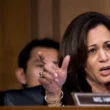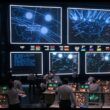Integrating Iran into the international nuclear community
April 3, 2015
The political theater in Washington has been contentious and terribly partisan leading up to the announced framework for the nuclear deal between six world powers and Iran. The political fog has obscured the legitimate technical and political disagreements over an Iran deal, which exist because of the complexity of the issues and the potential consequences of such a deal in the politically volatile Middle East.
Much of the focus of negotiations has been on “breakout” time—particularly how many centrifuges would Iran be allowed to keep spinning, how much low-enriched uranium can it keep, and what plutonium production limits the Arak research reactor will be allowed.
Whatever the final resolution, I believe that Iran has already put in place all the requisite technical capabilities to build the bomb, but it has not yet decided to exercise the option to build one. What complicates the problem of reaching a lasting deal is the reality of physics: It takes rather small quantities of bomb fuel—highly enriched uranium or plutonium—to build a bomb, whereas commercial nuclear power production requires huge amounts of uranium and large enrichment capacities. In other words, even a small production capacity is useful for bombs, whereas large capacities are required for electricity. Hence, it is all but impossible to allow Iran a significant uranium enrichment program for commercial nuclear power but prevent it from reconstituting the capabilities to build the bomb, should it decide to break the agreement.
The key will be to convince Iran not to exercise the bomb option. The breakout times negotiated in the framework agreement will give the international community time to respond if Iran does cheat on the accord, but at least as important as time is whether that community can muster the will and consensus to respond quickly and effectively, should Iran decide to develop the bomb. The international community did not respond when North Korea broke out to build the bomb in 2003. Now it not only has the bomb, but a rapidly growing arsenal.
Based on my discussions with Iranian officials, Iran’s insistence that it not be required to close any of its current nuclear facilities is a matter of national pride. However, this resistance also preserves a hedge, allowing Iran the ability to resume its bomb program should the negotiating partners, particularly Washington, not keep their end of the bargain.
The objective for the next few years, should the deal go through, is to convince Iran that it has more to gain from keeping its end of the bargain than it would lose by exercising its hedge. In due time, Iran will find on its own that a vibrant and economically viable nuclear energy program does not require enrichment or reprocessing. Iran should emulate the nuclear path chosen by South Korea, which chose electricity and created an economic miracle, rather than North Korea, which chose the bomb at the expense of its economy and the welfare of its people.
Moreover, if Iran converts the deeply buried Fordow centrifuge facility into an underground scientific laboratory as suggested by US Energy Secretary Ernest Moniz and develops its Arak reactor as an international user facility, as I suggested previously, Iran will become integrated into the international research community rather than remain in isolation. If civilian nuclear power expands and Iran becomes internationally more integrated, it will have more to lose by exercising the bomb option.
That said, the process of integrating Iran into the community of responsible nuclear powers will take time. Iran will keep its nuclear hedge, and the international community should insist on having intrusive inspection rights and also focus on how to respond, should Iran break the deal.
Siegfried S. Hecker
Center for International Security and Cooperation
Stanford University













